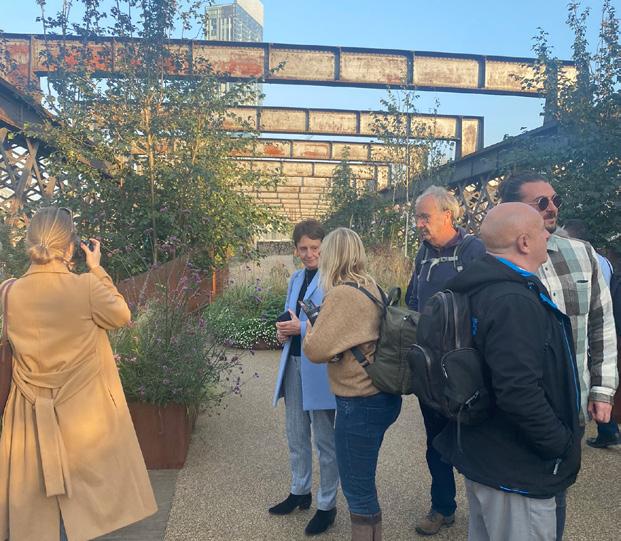
2 minute read
Long-term advocacy works
Paul Lincoln, Editor
On 31 January, Landscape Institute CEO Sue Morgan chaired the launch of the Natural England Green Infrastructure Framework. Described as “a powerful tool to help deliver the Nature Recovery Network by planning for and investing in space for nature in our urban areas…. [it] provides clear guidance about the quantity and quality of greenspace required to unlock multiple benefits for climate, health and prosperity.”
In tandem with this, the Secretary of State for the Environment published the Environmental Improvement Plan 2023, outlining the government’s approach to halting and reversing the decline in nature. And just a few weeks earlier, DEFRA announced that SuDS would be made mandatory for new developments from 2024.
Green Infrastructure became a key part of Landscape Institute advocacy in 2009 with the publication of the first position paper on this subject. Sustainable drainage has been championed by Past President Sue Illman since 2011 when she visited Portland, Oregon and met their local authority pioneering team, utilising the approach to the new drainage system, named SuDS; devised by their landscape architect Tom Liptan.
It is through the persistence of members of the profession, that these issues have been pushed up the agenda.
In this edition, we continue the agenda of advocacy and examine the link between tackling climate emergency and specification of materials. Biodiversity in the shadow of the Tower of London; a city extension at the Floriade; a new park in Manchester; reimagining the landscape in Galway; and evaluating the carbon impact of tree planting, all demonstrate the power of the landscape architect to have a huge impact on tackling climate emergency.
We illustrate how materials will change to meet net zero; go organic in the Building Centre, and look at the lessons to be learned from living bridges and floating agriculture in India and Bangladesh.
The Skills for Greener Places report was launched at the Jellicoe Lecture. It identifies “a moment of opportunity for landscape.” As we implement its outcome, it is important to remember that it is through persistent long-term advocacy that the niche ideas of fifteen years ago have become mainstream thinking.










